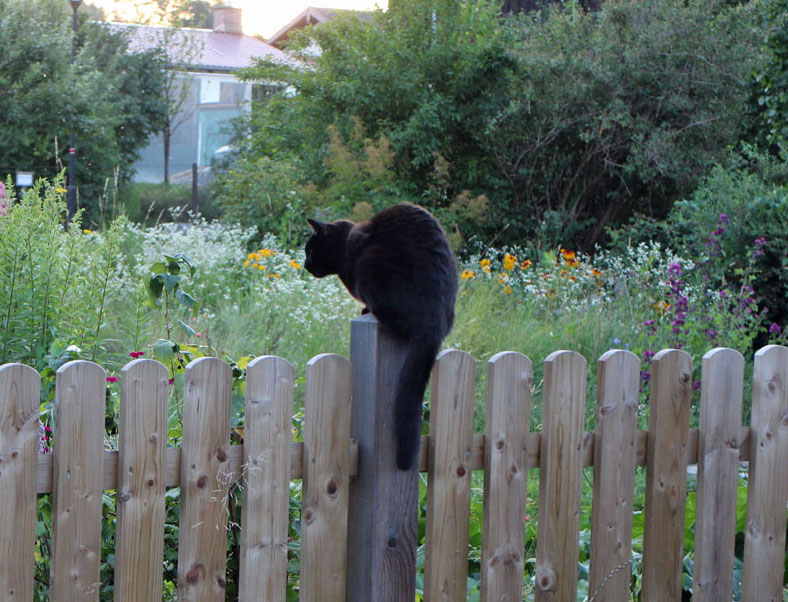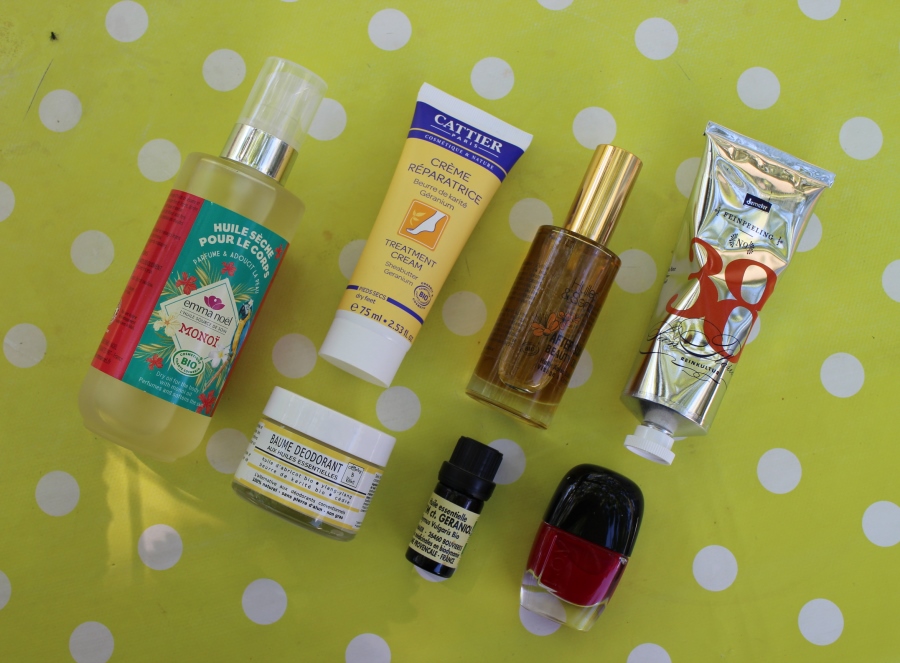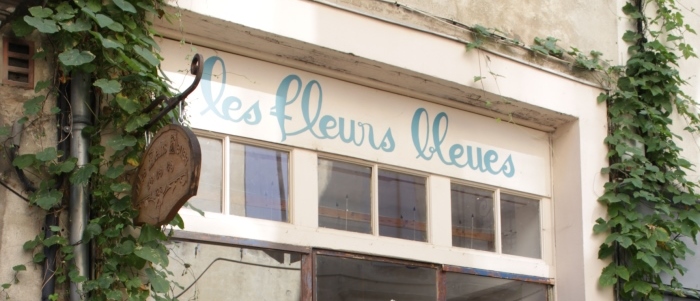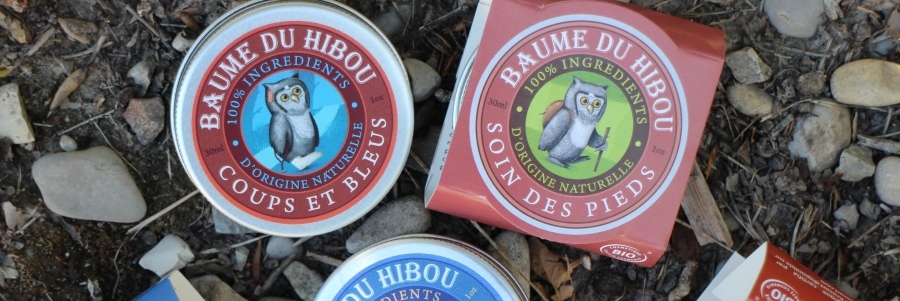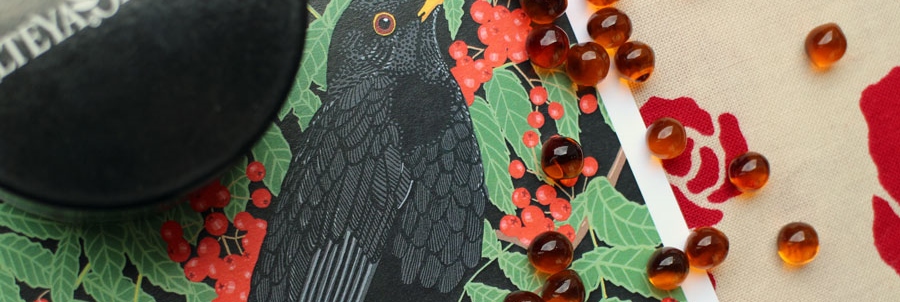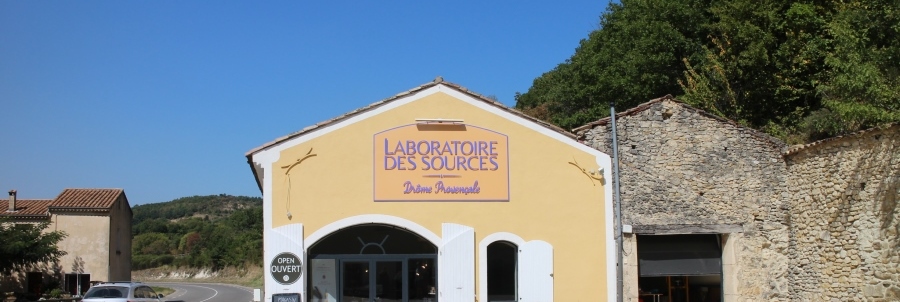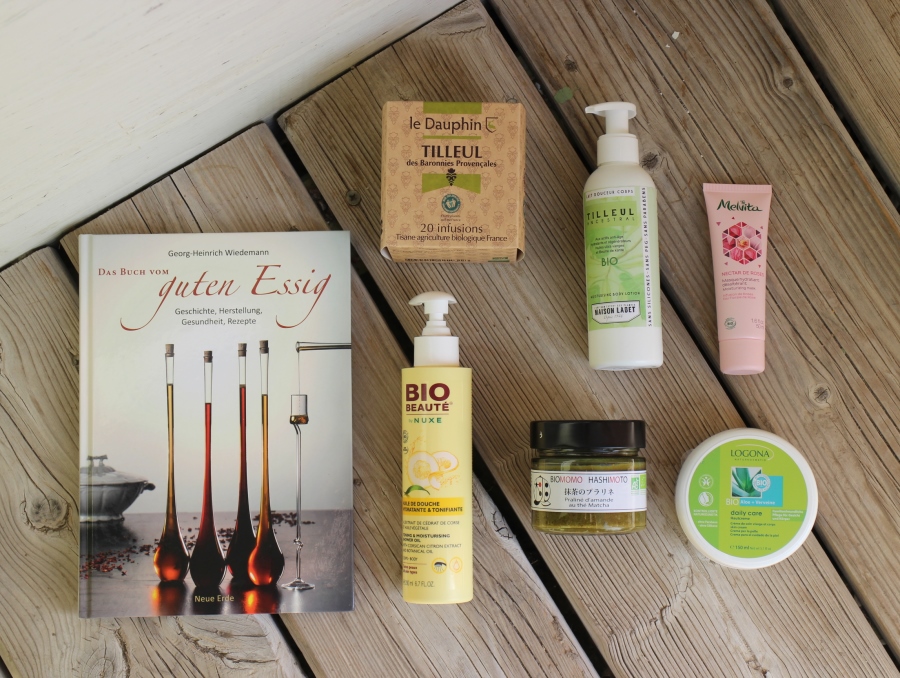Dear international readers of Beautyjagd,
Welcome to the next English-language edition of Beautyjagd! This is a condensed version of the most important articles that have appeared on my blog over the last two weeks. For more information about this new format, click here. And now: enjoy the best of Beautyjagd in English!
Best wishes
Julia
Beauty Postcard 5: Pot of Shade Heliotropic SPF 30 from Kypris
Hi my dear,
I know, it’s pretty crazy that I ordered another sun cream although I already have a big collection of sun care products! However, when I read a review on No More Dirty Looks about the new Pot of Shade sun protection and primer from US luxury brand Kypris, I simply couldn’t resist 😉 . Kypris is based in Scottsdale, Arizona; you might have heard of their night treatment Moonlight Katalyst – it’s probably one of Kypris’ best-known products. A few weeks ago, Kypris launched Pot of Shade Heliotropic SPF 30, a mineral-based sun protection cream which also works as a primer. It’s an emulsion of water and processed plant oils; 20% (non-nano) zinc oxide have been added as a sun filter. The formula also contains anti-oxidant algae, kukui nut oil, tamanu oil, soothing bisabolol and extracts of the creosote bush (in the Southwest of the US, this plant is traditionally used as a sun protection ingredient). Heliotropic cream doesn’t contain essential oils so it doesn’t smell of anything.
And how does Heliotropic actually perform? Well, I am currently wearing the cream every day – the South of France where I am travelling at the moment is SUNNY !- and it feels really comfortable on the skin. The texture is creamy and more moist than oily, it is easy to apply and the whitening factor is low after I have worked the cream into my face. My skin feels hydrated and protected and not sticky at all; I can barely tell that I am wearing a sun cream! I’ve applied Heliotropic on top of a hydrosol – I don’t need any additional skin care at the moment – and finish off with a dusting of mineral foundation. I’ve also tried out a liquid foundation over Heliotropic and that works well, too. The last few days it was so hot that I only wore some powder on top of the sun cream. In my opinion, Heliotropic is one of the best sun protection creams I’ve ever tried – unfortunately it is also one of the most expensive sun creams I’ve ever come across. And it has gotten me hooked; now I really want to try out Moonlight Katalyst…! However, luckily I am currently travelling in rural France so I can’t really order stuff online at the moment 😉 .
Lots of love
Julia
PS: The Pot of Shade Heliotropic contains 27ml; I ordered it through Niche Beauty for 85 EUR. However, I have also seen this product at Biomazing (where it costs only 65 Euro). The Kypris homepage also has a store finder.
[Click here for more pictures and the original German article Postkarte 5: Pot of Shade Heliotropic von Kypris]
Gemmotherapy: The power of buds
I am travelling in the South of France at the moment. And I love checking out the local pharmacies – French pharmacies always carry a large selection of interesting essential oils.
Earlier this week I noticed an intriguing-looking range of small bottles in a pharmacy in Valréas: these bottles contain bud extracts. The herbal science of Gemmotherapy is very popular in France and at the moment, it seems to be going through a renaissance of sorts. Since curiosity is my middle name I simply had to try this out! I bought two bottles from a brand named Vitaflor – extract of fig tree buds and extract of linden tree buds.
Gemmotherapy is a comparatively young science (“gemma” means “bud” in Latin) which was developed in the 1950s by a Belgian medical doctor, Pol Henry. Gemmotherapy believes that the buds, sprouts or shoots of a plant, bush or tree contain all the nutrients and other ingredients that the plant needs to grow. The extracts of this type of plant material is also said to be of high nutritional value for us humans; they contain amino acids, proteins, polyphenols, enzyme and vitamins which are particularly beneficial for cell regeneration. Pol Henry originally called his herbal science “phyto embryo therapy”, later the term “Gemmotherapy” became more popular.
There are many different gemmotherapy brands these days. My extracts from Vitaflor were manufactured according to the classic Belgian preparation method which is said to be especially powerful. The Vitaflor extracts are liquids and you are supposed to swallow a certain number of drops every day. The extract is prepared by submerging the respective plant material in a mixture of equal parts of water, glycerin and alcohol and left to macerate for 20 days. Gemmotherapy extracts are recommended for various illness and complaints, like exhaustion or inflammation; they are also used to increase the body’s metabolism or circulation. Each plant is assigned certain beneficial properties; I selected fig tree and linden tree simply because I love both type of trees. And yes, I know, one shouldn’t really buy medicine according to whether one likes it or not 😉 . In this case, however, it looks like I instinctively made the right choice: the linden tree (tilia tormentosa gemmae) is said to increase calmness and serenity and to promote good sleep while the fig tree (ficus carica gemmae) is supposed to help with nervousness, stress and stomach complaints. I can always use a dose of calmness and serenity 😉 .
If you stick to the recommended dosage there are no adverse side effects. I take 15 drops per day (either straight from the bottle or dissolved in a glass of water) before dinner. And although the taste or fragrance of a medication really shouldn’t play any role in the treatment, I must admit that the fig bud extract smells and tastes amazingly well – really like a fig tree: slightly sweet, a little green and a bit fruity. The linden extract also reminded me of a blossoming linden tree. I am fascinated by these extracts!
I did a bit of research into gemmotherapy for this article and have made a short list of other extracts that interest me: rosehip buds (against migraine), raspberry (against PMS and menopausal symptoms) or the classic blackcurrant which is supposed to act like plant-based cortisone. In France there are trained gemmotherapists who will create individual prescriptions of plant extracts depending on what complaints (chronic or acute) you have. I even read that some French health insurance companies will take over of the cost of a gemmotherapy treatment.
This is what I love about travelling: discovering new things and then going online to research them further. I had previously only heard about gemmotherapy and I am glad that I now had the chance to look at this fascinating science more closely. I’ve also decided to take the fig drops every evening and am curious to find out whether I will feel more vital and relaxed at the end of the treatment! I already know that the gemmotherapy extracts will remind me of the sun-drenched South of France 😉 . In Germany, gemmotherapy is still mostly unknown; I read, however, that drops and sprays formulated with bud extracts can be ordered in pharmacies. My drops from Vitaflor are certified organic and cost around 10 Euro per bottle. Here is the brand’s homepage which presents Vitaflor’s entire gemmotherapy portfolio.
[Click here for more pictures and the original German article Gemmotherapie: Die Kraft der Knospen]
My week was very summery indeed which is reflected in these Beauty Notes: body care is very important to me at the moment – dry air and plenty of sunshine means that I use a lot of shower gel and body oil! – so when we were travelling through Nyons last week, I bought 1 litre of Monoi shower gel and a large bottle of Monoi Dry Oil from French brand Emma Noël in the local organic supermarket. I’ve already shown you the products on Instagram. Emma Noël is the beauty brand of oil manufacturer Emile Noël who is based in the Gard region, not far away from where I’m staying at the moment. I love locally made products – and the monoi products smell heavenly!
We also visited raw ingredients manufacturer Huiles et Sens which I have been wanting to do for ages. Huiles et Sens is based near Vaison-la-Romaine; a few years ago I ordered their chia oil online – that was before chia oil became so popular in Germany. The company has a retail store where I bought several products, including the After Sun Beauty Oil: a calming oil blend which is based on argan oil, wild rose oil and jojoba oil plus essential oils of camomile, geranium and speik lavender. I use the oil at night, usually mixed with aloe vera gel or the Nach der Sonne aftersun moisturiser from Dr. Hauschka – it’s lovely.
To remove my sun protection cream in the evening I use the Feinpeeling Mandarine No. 38 from German brand San Floriano which I received just before leaving for France. It’s a gentle salt-oil body scrub scented with zesty mandarine; it comes in a large silver tube and also contains beeswax which means that my skin is beautifully soft after I rinse off the scrub paste. San Floriano is from Bad Boll near the Swabian Alps mountain range in Southern Germany; the brand’s product portfolio is Demeter-certified. They also have tube soaps and massage candles with interesting fragrances: some of the scents are inspired by historical perfumes. You can find San Floriano online, for example, at Kein Plunder.
I also use a lot of foot cream at the moment and I particularly love the Crème Réparatrice Sheabutter Géranium from French brand Cattier: a very rich cream based on water, shea butter and glycerin. And the fragrance!! You know how much I love rose geranium 😉 .
And speaking of my feet: I am currently wearing the nail polish in shade 160 Remarkable Red (a vivid cherry red) from LOV, a makeup brand which was recently launched in Germany (LOV is from the same company that manufactures drugstore brands Essence and Catrice). I already posted a pic of my toes on Instagram! LOV’s products are not organic but their nail polishes are big5-free. I really like the oval packaging. The nail polish seems to last very well and it was easy to apply thanks to the wide brush. The LOV polish cost 6 Euro, you can buy it in some outlets of the Rossmann chain and in Müller drugstores as well as online.
The cosmetics that I brought with me to France actually include a French product! The deodorant cream Baume Deodorant from Clémence & Vivien in Sucré is based on baking soda and moisture-absorbing starch. Clémence & Vivien is a young French brand, in Germany their products are available through Stararoma which is where I bought my deodorant. Sucré is scented with notes of ylang ylang; there are also two other deo fragrances. I like the texture of this deo cream: despite the high temperatures we are having at the moment the cream stays firm; it works really well and moisturises the skin, too. Nice! The deodorant cream cost around 8 Euro.
I am currently travelling through the Northern parts of the French Provence. The region is actually called Drôme provençale and it is famous for its cultivation of lavender and other medicinal plants. Quite a few hydrosol distillers, oil mills and organic beauty manufacturers are based in this area and even in the smallest rural food stores, you can buy essential oils that are made locally! I found the Thyme Oil (chemotype geraniol) by French brand Fred Maier almost by accident. Fred Maier is a manufacturer of biodynamically cultivated medicinal plants and essential oils. Because of the high percentage of geraniol this thyme oil smells more floral than other thyme oils I have tried out. I don’t know yet what I’ll do with the oil; probably use it in body lotion or a bath oil. More information on Fred Maier is available on the company’s homepage.
And here are some interesting organic beauty news that I came across last week:
- UK brand Balance me has launched a Restore and Replenish Overnight Mask which was inspired by Korean sleeping masks. More information is available here.
- German brand Myrto Naturalcosmetics is introducing a new styling product: Forming Texturizer Wax is lighter than their Argan Hair Wax. Sounds interesting. For more info, click here.
- And US brand Ilia Beauty had announced that its new autumn collection Fall Into Place (brushes, foundations and lipsticks) will be launched soon. More information is available here.
[Click here for more pictures and the original German article Beauty-Notizen 9.9.2016]
Whenever I am travelling in France I notice how many small companies they have over here: a fig producer (which is mentioned in various gourmet food guides) has exactly five employees. An essential oil distillery is operated by a few family members. And a group of friends is running a biodynamic vineyard. These are unusual and innovative concepts and they are fascinating to discover. Whenever I see a farm store in between the endless lavender fields, we are stopping the car to see what kind of products they are selling. And often I’ll end up buying an interesting oil or hydrosol.
Whenever I come across these tiny companies I ask myself: how can their business actually survive? Do they get enough customers to make their enterprise financially viable? Is such a basic marketing strategy really sufficient to promote their brand? I know how difficult it is to get a bank loan when you have an unusual business proposal. And I think that most of these businesses probably run on sheer passion, with their owners working 50-hour weeks while cutting back on their own insurance, salary and holidays; all to keep the business afloat.
And this made me think about the organic beauty industry which, after all, is the main subject of my blog. The longer I write about organic cosmetics and companies, the more I realise how difficult it is for a small brand to purchase affordable packaging or constantly develop new products (for which you need to order – and stock – more raw ingredients) without a solid financial base.
A similar situation applies to small retailers: often, an online order will be packed by the store owners themselves and there might be no (or fewer) samples available than what you would receive if you had placed an order through one of the larger online perfumeries.
However, these small and medium-sized companies usually compensate for their lack of size by personal commitment, qualified advice and innovative ideas. Small businesses often have more flexibility than a larger company (shorter decision-making processes, for example). And quite often, consumers don’t realise how small a brand actually is: a good website and a pretty logo can make a brand or store appear bigger and busier than they actually are.
I love the passion that is expressed by a carefully curated product selection; and I love it when companies sell brands and products you wouldn’t find anywhere else. I like diversity and flourishing niche brands that successfully co-exist with the mainstream (against which I don’t have anything, by the way).
However, there is a small disclaimer: being a small retailer/brand is no excuse for acting unprofessionally. Service is important, just like authenticity and knowledge. But I do understand why sometimes things work differently in smaller companies than they do in big businesses. And if I like and respect a brand, I am willing to overlook smaller mistakes; I will also convey my satisfaction to the retailer or company.
So I’d like to congratulate all those courageous company founders out there, who follow their own vision by combining stubbornness and a belief in their business idea with a professional attitude. This makes our industry – and the economy – more colourful, more interesting and, most importantly, more human. Thank you!!
If you want a few examples, check out my article archive in the sidebar: I mostly write about small and independent companies and beauty brands.
[Click here for more pictures and the original German article I ♥ kleine Unternehmen]
Look at the little French owl checking out what the American badger is doing! In a local organic store (I’m still travelling in France) I recently discovered the cute little balms of French brand Baume du Hibou – and of course I immediately thought about the Badger Balms from the US!
Le Secret Naturel, the small company that manufactures Baume du Hibou (“hibou” is French for “owl”), is based in Bollène, not far away from the camping site I am currently staying. The Hibou range offers six variants, including balms to promote sleep or soothe tired feet; for alleviating mosquito bites, sore muscles or little injuries.
Like any true balm, the Baumes are based on plant oils and do not contain any water. And since we are in the Provence it comes as no surprise that Baume du Hibou contains olive oil and beeswax, plus essential oils as active ingredients. I couldn’t resist the pretty little tins – also, I like to support local businesses 😉 so I bought three of the six balms.
In the evening I massage my feet with the Soin des Pieds, a green-tinted balm which smells like a forest: it contains tea tree oil, rosemary, peppermint, fir tree, eucalyptus and ginger. The Baume pour Sommeil Paisible (good sleep) is another balm that I apply at night time: it contains lavender and petitgrain essential oils and a little mandarine. The balm smells surprisingly soft; I apply it to my temples, the neck and my wrists before drifting off into the realm of Provencal dreams 😉 .
The orange-yellow tinted Baume pour Coups et Bleus helps to treat blunt injuries and bruises – luckily I didn’t have to try it out yet! Unlike the poor little owl on the tin which has its whole leg wrapped up in bandages. This balm smells spicy and a little like curry: it contains arnica, lavender, rosemary and Australian tea tree oil.
Each tin contains 30 ml and costs around 7 Euro. I found the Baume du Hibou range online at Monde Bio, a French online store where I occasionally order products. I hope that one day the products will also be available in Germany. My favourite is the foot balm because I love the woodsy fragrance!
[Click here for more pictures and the original German article Fundstück mit Eule: Baume du Hibou]
Beauty Postcard 6: Rose Beauty Capsules from Alteya Organics
Hello my dear,
You asked me to write to you whenever I found an interesting beauty product – and here is my latest discovery! I noticed the Rose Ageless Beauty Capsules from Bulgarian brand Alteya Organics at the Naturdrogerie store in Mainz this summer: they are capsules filled with a blend of olive oil, grapeseed kernel oil, rosehip kernel oil, essential rose oil, sea buckthorn oil, acai oil, hemp oil and borage oil. The capsules are meant to be taken internally (although you can also open them with a pin and apply the oil mixture to your face) – apparently these “internal” rose capsules are popular in Bulgaria. I like these kind of traditions! And of course it is well-known that plant oils can benefit the whole body. The ingredients have anti-oxidant properties and are anti-inflammatory; extracts like acai help against free radicals while borage oil offers valuable fatty acids. And rose oil is good for the skin!
Once I read that the oil mixture also acts as an “inner perfume” I simply had to buy the capsules! And yes, I did notice that my breath (and presumably my skin) smells of roses for a while after I’ve taken a capsule. I already know this effect from the eucalyptus capsules I take whenever I have a cold. And I like the thought of doing something for my beauty from the inside 😉 . A jar contains 60 USDA-certified capsules. The manufacturer recommends a dosage of two capsules per day which means that the jar should last for a month. One day I really want to visit the famous Rose Valley in Bulgaria 🙂 .
Lots of love
Julia
PS: The Bulgarian Rose Beauty Capsules from Alteya Organics are also available online, for example, through the Naturdrogerie. And here is the link to the homepage of Alteya Organics.
[Click here for more pictures and the original German article Postkarte 6: Rose Beauty Capsules von Alteya Organics]
En passant: Driving past Anne Felker
Do you want to hear of a really cool coincidence? Last weekend we were on our way back from visiting the little mountain town of Dieulefit. We were driving back to our camping site when – in the little village of Souspierre – I saw a large building with a sign: “Laboratoire des Sources Drôme Provencale”. Sounds intriguing, right? We stopped the car, turned around and drove back to the building, which had a little store attached to it. I went into the store and couldn’t believe my eyes: there was a display stand of Anne Felker cosmetics!
I should explain why I was so excited: Anne Felker is a niche French brand whose products are difficult to find – they are usually only available online. The cosmetics are based on rose water which is harvested from the company’s own rose garden. I had met Anne Felker at Vivaness trade show this February and really liked the brand – and there, in the middle of tiny Souspierre in the North of the Provence region of France, was an Anne Felker store!
And this is the company history: Anne Felker was a botanist who had a large rose garden where she distilled her own rose water. After she died, around two years ago, the rose garden was acquired by the Laboratoire des Sources – a company founded by Cora Lafont in 1998. Lafont then developed an organic beauty range with Anne Felker’s famous rose water as the key ingredient. The Anne Felker range offers some 20 face and body care products, almost all of which are based on Damascene rose water.
It was really difficult deciding which product to buy, they were all so interesting! In the end I bought the Serum Visage Soin Élémentaire de Rose, a milky-oily serum lotion which is perfect for my rather dry skin. The serum also contain minerals which even out the skin tone a little. I love it! I also bought the spray-on Bodylotion Voile de Rose lacté which has a beautiful rose fragrance; the texture is light but still hydrating – very French. Finally, I couldn’t resist the soap Cocon de Rose – my nose decided for me, the powdery rose scent is simply divine.
The nice sales lady gave me the hand cream Baume Réparateur Mains Caresse de Rose as a gift, because I had bought so much but also because she was happy to hear that I knew the brand. If you buy the Anne Felker products in that local store, you also receive a 15% discount on the usual sales price. All products are certified by Cosmebio and Ecocert. You can find more information about Anne Felker on the brand’s website or on the homepage of Laboratoire des Sources, where you can buy the products online.
[Click here for more pictures and the original German article En passant bei Anne Felker vorbeigefahren]
This week’s Beauty Notes are again dominated by France 🙂 . I am still travelling through the Provence although by the time you are reading this, I’ll be back in Nuremberg. And I was quite busy last week: we visited the little town of Buis-les-Baronnies which is known as the linden tree capital of France (my travel guide called it “the Wall Street of linden trees”). If you read Beautyjagd regularly you’ll know how much I love the fragrance of linden trees! It must smell heavenly in Buis-les-Baronnies when spring time comes and all the linden trees are in bloom.
Of course I used the opportunity to stock up on linden blossom: I bought linden blossom tea bags from well-known herbal tea store Le Dauphin and more loose linden blossoms from a market stand.
The town also had an added attraction: Maison Laget, a niche fragrance manufacturer, has its main store in Buis-les-Baronnies. Around four years ago, on a previous visit to the Provence, I had discovered a honeysuckle-scented Eau de Toilette from Maison Laget in a small store in Vaison-la-Romaine – I wrote a blog post about it (German only, sorry!). Since I was already in Buis-les-Baronnies I simply had to visit the large Maison Laget store – and of course I also had to buy something: the certified organic body lotion Lait de Beauté Douceur du corps au Tilleul which has a subtle and not too sweet linden fragrance, and an interesting immortelle macerate. Maison Laget was founded in 1946, the company is currently redeveloping its product portfolio and I am curious to see what products they will be launching in the future.
A few days ago I visited the headquarters and factory of French organic brand Melvita which is based in Ardèche region, near the small village of Lagorce. Such a beautiful landscape! Melvita offers guided tours through their new factory (it’s a “green” building) several times a day: the tour takes around an hour. There are walkways with large windows throughout the factory building: you can watch parts of the production process and get an impression of how Melvita works. I like the way the company is making itself accessible for its customers. Of course they also had a factory shop: I bought the Masque Hydratant Désaltérant Nectar de Roses which I have been applying every evening since our visit to Lagorce. The constant sun and dry air have made my skin really dehydrated and it’s practically drinking up the Melvita mask! The Masque Hydratant Désaltérant has a gel-like milky texture, you apply it to the skin and rinse off the remains after around five minutes. Kind of an express moisturising mask! You can check it out on Melvita’s homepage. I have almost finished the tube – and my jar of Heliotropic Sun Cream from Kypris (see above) is also almost empty.
Verbena (verveine in French) is an enormously popular herb in France; you can buy the loose dried leaves on any open-air market and make your own herbal tea (tisane). I actually brought some verbena with me from Germany: Daily Care Hautcreme Aloe and Verveine from German brand Logona is an all-purpose cream which has a fresh verbena fragrance and is not too oily or sticky. The cream is based on water, organic olive oil, organic palm oil, organic aloe vera and beeswax.
Just before I left for France I visited my local branch of organic supermarket retailer denn’s and bought some typically French products – check out my new blog post on denn’s Bio-Blog where I am showing you what I bought (German only, sorry!).
Over the last few weeks I finally found time to read again. Last month I received the Book of Good Vinegar from Georg-Heinrich Wiedemann as a review copy – and it turned out to be a fascinating read! I knew the basics about vinegar, of course, but it was interesting to get a proper introduction into vinegar making: the ingredients, the different production processes (from artisan hand-prepared vinegars to industrially-manufactured vinegar) and the various types of vinegar – from Aceto Balsamico which is produced in Modena in Italy, to classic Japanese rice vinegar. I also found the chapter on vinegar ingredients fascinating: besides the acid, vinegar also contains milk acid, flavonoids, enzyme, amino acids and provitamin A. The second part of the book was dedicated to the different ways you can use vinegar – for cooking and flavouring but also for various household cleansing chores or as a natural medicine. The author, who produces and sells his own vinegar, really knows his product 😉 . The book has been published by Neue Erde (here is the homepage) and is, at the moment, only available in German.
I made yet another fabulous food discovery here in France: in a local organic supermarket I came across the products of Biomomo which are produced by Japanese patissiers Emiko and Taisuké Hashimoto. The Hashimotos learned their craft in Japan and France and their Biomomo brand offers the best of both culinary traditions: the range includes delicious hand-made jams and sweet spreads – like cherry jam with ginger or almond butter with matcha – which are made with organic ingredients. French master chefs, like Alain Ducasse or Christian Garcia have already discovered Biomomo’s products – and I also bought several of their jams 😉 . I love both France and Japan so I am delighted about my new discovery! You can find more information about Biomomo on the brand’s homepage.
But let go back to cosmetics now! I really like the body care range with Corsican cedrat lemon by French beauty brand Nuxe’s certified organic Bio Beauté by Nuxe range. Last year I bought the body care oil and this May, during a trip to France, I purchased the matching body care cream. Bio Beauté has now launched the shower oil Huile de Douche Cédrat de Corse which I bought in a pharmacy a few days ago. I love the delicious lemon tart fragrance of this skin care range! The texture of the shower oil is liquid, it doesn’t foam much but is easy to rinse off. Afterwards my skin doesn’t feel dry but I still apply body oil and butter afterwards – I’ve been swimming a lot over the last few weeks and that has made my skin extra dry. Funnily enough the shower oil actually doesn’t contain that much oil, it is based on water, glycerin and very mild tensides. I like the fragrance so much that I’ll probably buy a bottle to take home to Nuremberg with me.
And here are some interesting organic beauty news that I’ve discovered over the past week:
- The new limited edition of French brand Couleur Caramel is called Un Dimanche à Deauville (A Sunday in Deauville) – I found the press info on Couleur Caramel’s homepage.
- I recently noticed the Yerba Mate SPF30 Mist from US brand 100% Pure – however, I think this product has been around for a while already. More information is available here.
- Bulgarian brand Alteya Organics has launched new sun protection products for the face: for more information, click here.
- German brand Regulat Beauty has just launched the face and body moisturiser Magic Mousse. More information is available here. I couldn’t find the ingredients listing anywhere but I think that this product is more near-natural than certified organic.
- French beauty brand Indemne has brought out the powder soap Moussaillon à saupoudrer. For more information, visit the company’s homepage.
- And German brand Speick has introduced two new Bath- and Shower Soaps – the fragrance variants magnolia and lilacs sound very interesting. You can find more information here.
[Click here for more pictures and the original German article Beauty-Notizen 16.9.2016]
Good-bye everyone and see you in two weeks!
Julia

